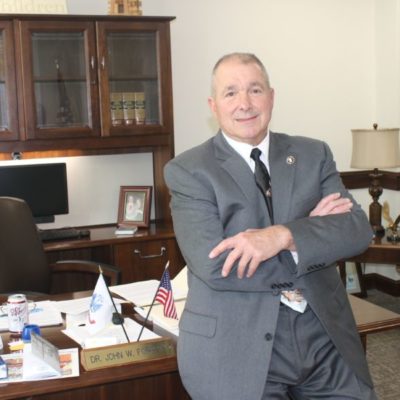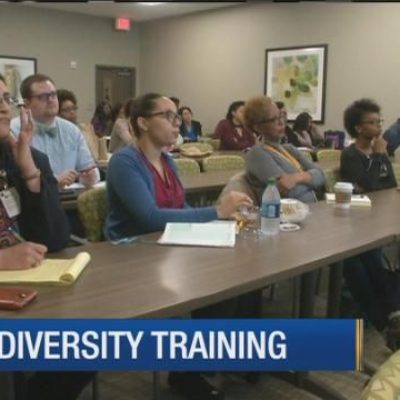Nashville sees spike in schools among Tennessee’s lowest performing; Joseph vows improvement
The number of Nashville schools on the Tennessee Department of Education’s list of the lowest performing in the state spiked over the last three years from 15 to 21.
In 2012, there were six schools on the list, and the new list indicates a worsening trend for the number of low performing schools in Nashville.
The state priority schools list represents the bottom 5 percent of schools based on standardized test results.
Because of testing issues last school year, those test results were not factored in. A school qualified for the list if it was in the bottom 5 percent in testing for the 2015-16 and 2016-17 school years, or if it failed to generate a graduation rate of at least 66 percent.
Metro Nashville Public Schools Director Shawn Joseph said any determination based on a single metric can be problematic, but his administration has identified the schools on the new list as needing improvement.
Joseph said that while there is a negative connotation attached to schools on the list, there is also a benefit. Landing on the list means extra resources, and his administration has identified an aggressive four-part plan to help move schools off the priority list.
Asked to predict how many of the 21 schools would remain on the state’s next priority list in three years, Joseph was unequivocal. “None,” he said.
The increase in priority schools offers another challenge for Joseph, who is navigating a school board that is bitterly divided over his job performance. In a 5-4 vote largely about his leadership, Sharon Gentry, who backs Joseph, was elected chair of the board.
“Under Dr. Joseph’s leadership we are going in the opposite direction of the district’s vision, which is to be the fastest improving urban school district in the nation,” said school board member Jill Speering, who has been critical of Joseph.
Nashville Mayor David Briley said the bump in priority schools indicates that thousands of students “are not getting the education they deserve, particularly low-income students and students of color. This is unacceptable.”
Briley said his vision is to be a city that supports all of its residents.
“As an immediate measure, we must learn from schools that are closing achievement gaps for students here in Nashville and share what is working with the rest of the district,” Briley said. “I will also be working with city leaders, school officials and the state to reach actionable conclusions and move swiftly to address these disparities.”
Metro Nashville Public Schools moves 4 schools off priority list
Nashville has demonstrated some success moving schools completely off the priority list. Four schools tabbed as priority schools in 2015 improved and are no longer on the list.
Two of the 15 schools from three years ago are now run by the state’s Achievement School District, one is operated by the charter school group KIPP, one was combined with another traditional public school, and another was converted to an early learning center.
“Priority school designation means that the schools are going to have more resources to really target the needs of the school to accelerate growth,” Joseph said in an interview with The Tennessean. “This is an opportunity for these schools and these teachers who have been working hard to really get the resources they need.
“With this priority designation, we’re optimistic our schools will get better faster,” he said. “They won’t get worse, and that’s a commitment.”
Landing on the priority list opens up the opportunity for extra state and federal funding. The most recent state budget allocated $10 million for grants to priority schools.
MNPS strategy for supporting priority schools
Joseph said his administration will zero in on four areas to improve schools: school leadership, effective instruction, growing talent, and student and family support systems.
The last area of emphasis includes partnering with community groups to address specific areas of need.
For example, Lisa Coons, executive director of MNPS’ Schools of Innovation, pointed to a community-based program to donate coats and clothes for needy students who were missing school on cold days. That program paid off, Coons said.
“We tailor the programs to the specific needs of the school,” Coons said.
The Nashville schools on the priority list typically have high percentages of poor students and students who are chronically absent. The schools also have lower percentages of students achieving the growth projection for literacy.
Warner Elementary, in East Nashville, has 88.11 percent of its 227 students meeting the economically disadvantaged designation and just 35 percent meeting the growth projections for literacy.
At two high schools on the list — Maplewood and Whites Creek — chronic absentee rates are at 42 percent. Chronic absenteeism is defined as missing more than 10 percent of the school days in a given year.
Joseph already got the ball rolling to aid troubled schools by shifting more federal Title I funds to schools with the highest percentages of poor students.
“Whether or not these schools were on a state list, they were on my list for schools that need to improve,” Joseph said.
2017-18 tests not factored
After problems with the 2017-18 TNReady tests, the legislature passed a law this year blocking the Education Department from using those results to put a school on the list.
Education Commissioner Candice McQueen said a school could be removed from the list, however, if it had positive results on the 2017-18 test.
Identifying schools in need of help and providing additional resources to them have been part of the state’s larger effort to make accountability a pillar of its education policy.
“We believe accountability is a key element that has contributed to student growth in Tennessee and has been a foundation to our improvements in the last several years,” McQueen said.
In addition to the priority list, the state also released its rewards school list, which shows the top performing schools in the state. The rewards list was determined using a new formula that calculated overall testing results, student improvement, ACT scores and graduation rates.
Nashville had 22 schools on that list. In addition to the 21 schools overseen by Metro Nashville Public Schools, two charter schools operated by LEAD Academy and overseen by the Achievement School District are on the state’s priority list.
The Nashville schools on the priority list of the bottom 5 percent in the state
Alex Green Elementary
Amqui Elementary
Antioch Middle
Bellshire Elementary
Caldwell Elementary
Cumberland Elementary
Gra-Mar Middle
Haynes Middle
Jere Baxter Middle
Joelton Middle
Madison Middle
Maplewood High
McMurray Middle
Moses McKissack Middle
Robert E. Lilliard Elementary
Rosebank Elementary
The Cohn Learning Center
Tom Joy Elementary
Warner Elementary
Whites Creek High
Wright Middle



